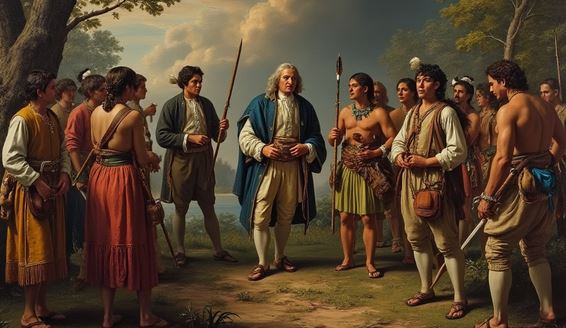PENNSYLVANIA STATE – Before William Penn founded Philadelphia in 1682, the Lenape people inhabited the land it occupied, also known as the Delaware Indians. They called the area where the Schuylkill and Delaware Rivers meet Shackamaxon, meaning “place where the chief was crowned.”
Here’s a breakdown of the Lenape presence and some of their significant village sites within present-day Philadelphia:
- Shackamaxon: Located on the west bank of the Delaware River, this was a central Lenape village and a place of political importance. Here, William Penn famously made his treaty of peace with the Lenape, an event commemorated in Benjamin West’s painting, “Penn’s Treaty with the Indians.”
- Passyunk: Situated in what is now South Philadelphia, near the confluence of the Schuylkill and Delaware Rivers, Passyunk was another significant Lenape settlement. The name means “in the valley.”
- Coaquannock: This village, meaning “grove of pines,” was located north of present-day Center City, on the east bank of the Schuylkill River.
- Nitapèkunk: This village means “place that is easy to get to,” and it was situated in today’s Fairmount Park area.
The Lenape had a deep connection to the land and its resources. They were skilled hunters, fishers, and farmers, and a network of trails and waterways interconnected their villages.
When William Penn arrived, he sought to establish a city based on principles of peace and tolerance. He purchased the land from the Lenape, although the exact terms and understanding of the transaction remain a subject of historical debate.
While Philadelphia grew and prospered, the Lenape were gradually displaced from their ancestral lands. They were pushed westward through treaties, land purchases, and forced removals, eventually finding refuge in Oklahoma and Canada.
Today, the Lenape’s legacy remains an important part of Philadelphia’s history. Recognizing their presence and understanding their displacement is crucial for understanding the complex story of the city’s origins.


Follow Us!